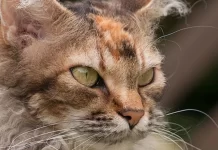Last Updated on September 29, 2023 by Fumipets
Siamese vs. Thai Cat: A Comparative Guide
Siamese and Thai cats, both originating from Thailand, share a common ancestry but have distinct characteristics that set them apart. In this comparative guide, we’ll explore the differences and similarities between these two feline breeds, shedding light on their histories, appearances, temperaments, and more.
Whether you’re considering adopting one of these captivating cats or simply curious about their unique qualities, read on to discover what makes Siamese and Thai cats special.
Siamese vs. Thai Cat
The Siamese and Thai Cat seem similar at first sight. Both have Thai roots, which is why they have different names. Nonetheless, while not being related breeds, the two are curiously close. On this issue, enthusiasts are rather emphatic. The Siamese cat as we know it now is a modified, carefully bred cat, which is the straightforward answer.
On the other hand, the Siamese breed’s traditional manifestation continues to be the Thai cat. Its synonyms, such as Traditional Siamese and Old-Style Siamese, are now clear. The differences between the two cats are visible when compared side by side. It also serves as justification for the fact that they are distinct breeds.
The Siamese and Thai Cats are both recognized by the International Cat Association (TICA). Only the former is recognized as official by the American Cat Fanciers Association (ACFA). This context makes it simple to comprehend the perplexity. In any event, it’s a great illustration of how selective breeding may affect people’s feelings.
At a Glance
Siamese Cat
Average size (adult): Medium
Average weight (adult): 5 – 12 pounds
Lifespan: 12 – 15 years
Energy level: Very active
Grooming needs: Low
Family-friendly: Yes
Other pet-friendly: Often
Intelligence: Very high
Thai Cat
Average size (adult): Medium to medium-large
Average weight (adult): 7 – 12 pounds
Lifespan: 12 – 15 years
Energy level: Very active
Grooming needs: Low
Family-friendly: Yes
Other pet-friendly: Often
Intelligence: Very high
Siamese Overview
The genetic foundation may be found in many cat personality characteristics. We would anticipate seeing a lot of overlap since the Siamese and Thai Cat have a similar ancestor. The popularity of this breed is clearly shown by an examination of its normal behavior. With both humans and other cats, it is sociable. It is least likely to act aggressively against people while it is clinging to its wild side.
Temperament
Siamese cats make the best pets by far. The personality of this short-haired cat is strong. This cat will make sure to repair your error if you don’t see it. One of the most vocal breeds is this one. This one always seems to have something to say. This cat enjoys both cuddling on your lap and chasing ghostly creatures around the home.
If you socialize your cat early on, the Siamese is loving with family members, strangers, and other animals. This cat is also amenable to handling. Once again, the timing is everything. The Siamese loves to be in the spotlight and feels most at ease there. This breed is flexible and can roll with the changes.
Intelligence
The intellect of the Siamese is widely recognized. It, however, has the customary two edges. Your pet will rapidly catch up on home customs. The Siamese cat was undoubtedly in mind when the words “curiosity and the cat” were combined. This cat exemplifies the phrase. The animal will learn how to operate the drawers and cabinets. Whether you want it or not, everything new will capture its attention.
This also implies that you’ll need to provide your pet with a lot of toys to keep them entertained. This cat will like interactive ones as well since they will positively arouse its interest.
Health and Care
Although quite popular, the Siamese breed is generally in good health. The same selective breeding that gives this cat its enlarged head also raises the likelihood that it may develop respiratory and dental problems. On rare occasions, cosmetic faults like a kinked tail may show. We firmly advise you to only purchase from breeders that provide a formal health guarantee.
Having a pet requires responsibility. Frequent veterinary care is essential, particularly given the potential hereditary problems with this breed. After all, the best approach to handle an issue before it affects your cat’s quality of life is to identify it as early as possible. Daily tooth brushing will aid in preventing dental problems in your Siamese.
Patterns and Colors
Four traits are recognized by the AFCA in its breed standard:
Tortie Point
Solid Point
Lynx Point
Tortie Lynx Point
Also permitted by the AFCA are cream, red, seal, chocolate, lilac, and blue. The same requirements apply to the TICA standard. Both groups are aware of how older dogs’ colors deteriorate. The price you may anticipate paying will depend on how desirable and uncommon the color pattern is.
Suitable for
The Siamese cat is best suited for people and families that have time to devote to this sensitive animal. It’s a pet that won’t tolerate being left alone for extended periods of time. This cat might easily be referred to as a people cat. It will develop close ties with its owners.

Thai Cat Overview
The Thai Cat has an old animal appearance. This breed is known by the Thai people by the name Wichienmaat, which means “diamond gold.” That is clear when you look at the warm beige tone of the cat’s coat. It is a genuine breed and adheres to the principles of what eventually came to be known as the Siamese to the rest of the world. The changes in its head form and eye color are obvious.
Temperament
The Siamese cat has won the hearts of many pet owners, and the Thai cat has many of the same endearing traits. It seems that conformational alterations and the development of new, standardized colors and patterns were the main foci of selective breeding. The Siamese is loud and animated, and so is this one. Moreover, it is just as perceptive and clever. Hence, the same advice about amusing your pet also applies here.
Intelligence
The Thai Cat has a strong connection to its wild side. It enjoys traveling the length and width of its environment in search of new things. These animals can leap, so they will look for new locations to explore or claim as their own on the tops of bookshelves or armoires. To keep this cat occupied, interactive toys are a need.
This cat will get along with all the people and animals in your home, just like the Siamese. The Thai Cat just once encounters outsiders. While vocal, it isn’t obnoxiously loud. The Thai Cat only wants you to be aware of all it has to communicate. An indicator of the breed’s intelligence is this communication.
Health and Care
Inbreeding or overbreeding are issues in many popular breeds. In either case, the gene pool is weakened and the prevalence of congenital diseases rises. However, early on, fans were aware of these dangers and took the appropriate precautions to preserve the Thai Cat’s general health. It is seen from the variations in Siamese respiratory disease risks.
No matter what kind or breed your pet is, the best method to care for them is to take them to the vet on a regular basis. Bad things can still happen despite the enthusiasts’ devotion and the breed’s genetic soundness. That is why regular yearly examinations are so important.
Patterns and Colors
The Thai Cat’s coat must have a light off-white hue, according to the TICA breed standard. Any point colors are permitted as long as they are suitable for each class. They must all have the same shade of hue. This provides you with a lot of leeway to choose the pet of your dreams. The evident hereditary flaws, such crossed eyes, are included on the association’s list of shortcomings.
Suitable for:
Compared to Siamese cats, Thai cats have a more substantial physique. That explains why it is a little bigger. This breed has a certain grace. This Siamese would be a great pick for anybody seeking one. Cost and availability are the other influencing variables. Compared to Siamese cats, Thai cats are relatively new to the United States.
It implies that finding one could be difficult. Also, it can result in a greater price. Nonetheless, be mindful of the variations in the animal’s health concerns. If you want a more authentic representation of this animal, the Thai Cat’s distinctiveness is worth the quest.

Which Breed is Right For You?
A fascinating lesson on the effects of selective breeding is the contrast between the Siamese and Thai Cat. Because of its lengthy history in Thailand, the latter may naturally appeal to purists. For someone who can give this needy feline the care they seek, both breeds would make wonderful companions. They are also perfect for households with kids or other animals.
Although being generally healthy, the Thai Cat has the advantage. This is one instance when a pet’s rarity and obscurity work to safeguard the genetic line. When it comes to availability and price, the Siamese wins. The latter, meanwhile, also depends on lineage. The cost of animals that are show-quality will increase. These characteristics may classify any of them as a dealmaker or breaker for certain people.
https://www.youtube.com/watch?v=8y9UoqP1Sv4&vl=en
Frequently Asked Questions
What Are the Historical Differences Between Siamese and Thai Cats?
Siamese cats have been bred selectively for specific traits, resulting in the modern Siamese with its distinctive angular face and slender body. Thai cats, on the other hand, are descendants of the original Siamese cats and represent a return to the breed’s traditional appearance, resembling the cats seen in Thailand for centuries.
What Are the Key Differences in Appearance Between Siamese and Thai Cats?
Siamese cats are known for their sleek, elongated bodies, wedge-shaped heads, and striking blue almond-shaped eyes. Thai cats, while still slender, have a more rounded face, softer lines, and expressive eyes that can be blue or other colors. Their body structure is more muscular and stocky compared to the Siamese.
How Do Siamese and Thai Cats Differ in Temperament?
Siamese cats are often described as vocal, extroverted, and highly social. They thrive on attention and enjoy engaging with their human companions. Thai cats share some of these traits but tend to be somewhat quieter and more reserved, making them affectionate but not as demanding of constant interaction.
Are There Any Health Considerations Unique to Siamese or Thai Cats?
Both Siamese and Thai cats can be prone to certain health issues common to their breed, such as dental problems and respiratory conditions. However, Siamese cats with their more extreme conformation may be more susceptible to certain inherited health concerns like hip dysplasia or heart conditions.
How Can I Choose Between a Siamese and a Thai Cat as a Pet?
Your choice between a Siamese and a Thai cat should align with your lifestyle and preferences. If you desire an outgoing, talkative, and attention-seeking companion, a Siamese may be a better fit. If you prefer a more reserved yet affectionate cat with a traditional appearance, a Thai cat could be your ideal choice. Spend time with both breeds, if possible, to see which one resonates with you the most.
In summary, Siamese and Thai cats, despite their shared origins, exhibit distinct characteristics in terms of appearance, temperament, and health considerations. When choosing between them, consider your lifestyle and the type of feline companion that best matches your preferences and needs. Both breeds have their unique charm and can make wonderful additions to your family.


















